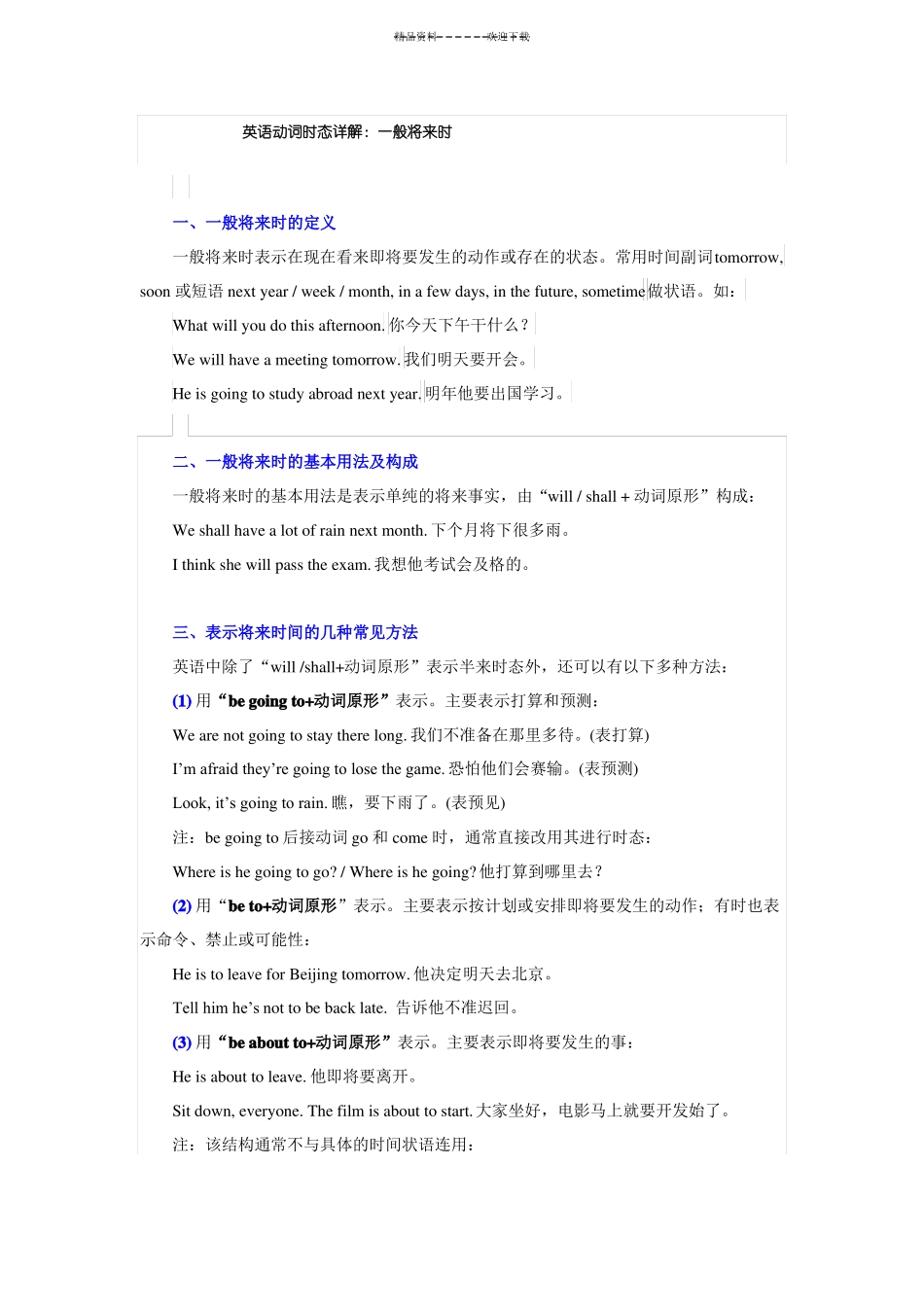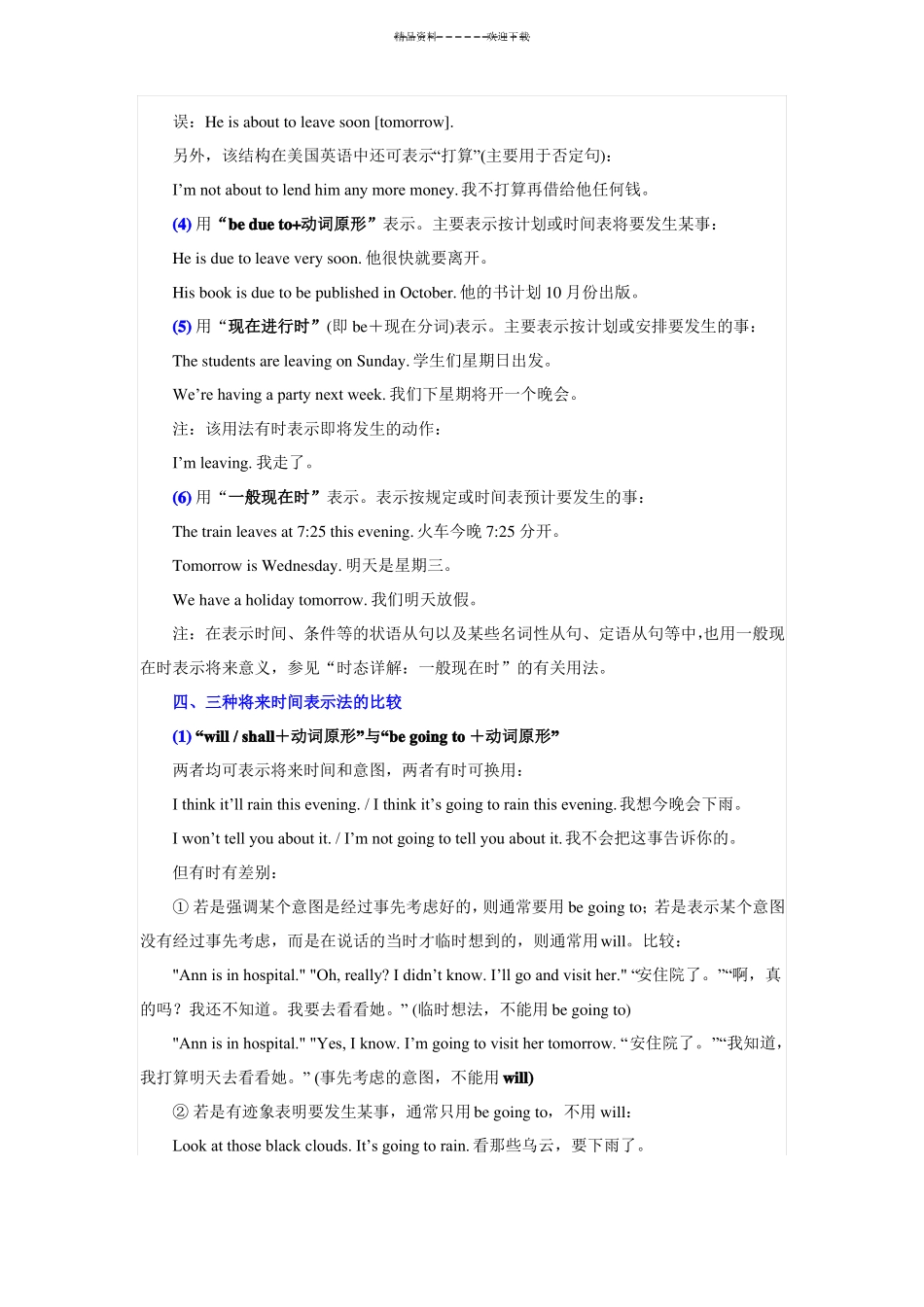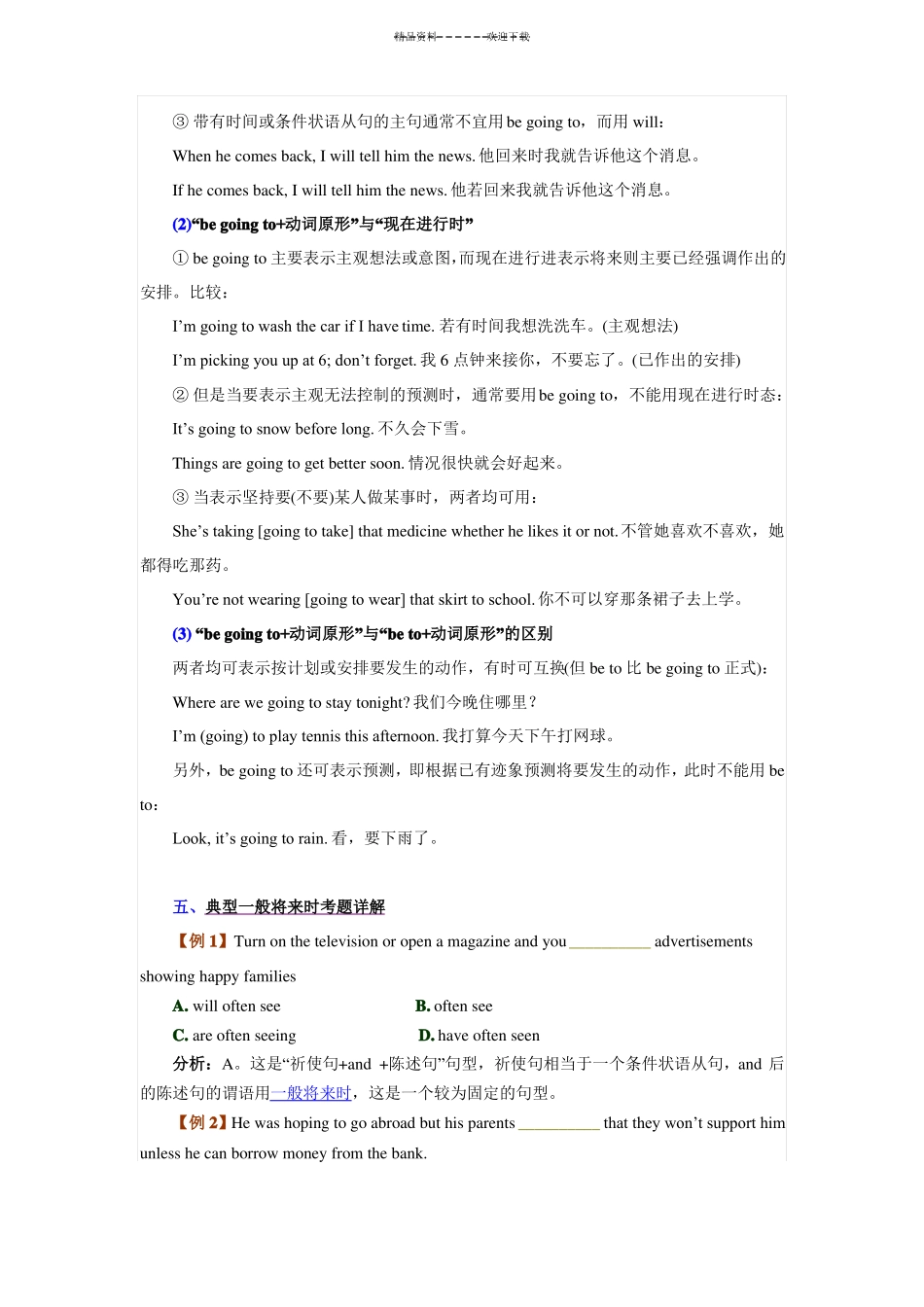精品资料欢迎下载英语动词时态详解:一般将来时一、一般将来时的定义一般将来时表示在现在看来即将要发生的动作或存在的状态。常用时间副词tomorrow,soon 或短语 next year / week / month, in a few days, in the future, sometime做状语。如:What will you do this afternoon. 你今天下午干什么?We will have a meeting tomorrow. 我们明天要开会。He is going to study abroad next year. 明年他要出国学习。二、一般将来时的基本用法及构成一般将来时的基本用法是表示单纯的将来事实,由“will / shall + 动词原形”构成:We shall have a lot of rain next month. 下个月将下很多雨。I think she will pass the exam. 我想他考试会及格的。三、表示将来时间的几种常见方法英语中除了“will /shall+动词原形”表示半来时态外,还可以有以下多种方法:(1) 用“be going to+动词原形”表示。主要表示打算和预测:We are not going to stay there long. 我们不准备在那里多待。(表打算)I’m afraid they’re going to lose the game. 恐怕他们会赛输。(表预测)Look, it’s going to rain. 瞧,要下雨了。(表预见)注:be going to 后接动词 go 和 come 时,通常直接改用其进行时态:Where is he going to go? / Where is he going?他打算到哪里去?(2) 用“be to+动词原形”表示。主要表示按计划或安排即将要发生的动作;有时也表示命令、禁止或可能性:He is to leave for Beijing tomorrow. 他决定明天去北京。Tell him he’s not to be back late. 告诉他不准迟回。(3) 用“be about to+动词原形”表示。主要表示即将要发生的事:He is about to leave. 他即将要离开。Sit down, everyone. The film is about to start.大家坐好,电影马上就要开发始了。注:该结构通常不与具体的时间状语连用:精品资料欢迎下载误:He is about to leave soon [tomorrow].另外,该结构在美国英语中还可表示“打算”(主要用于否定句):I’m not about to lend him any more money.我不打算再借给他任何钱。(4) 用“be due to+动词原形”表示。主要表示按计划或时间表将要发生某事:He is due to leave very soon. 他很快就要离开。His book is due to be published in October. 他的书...


